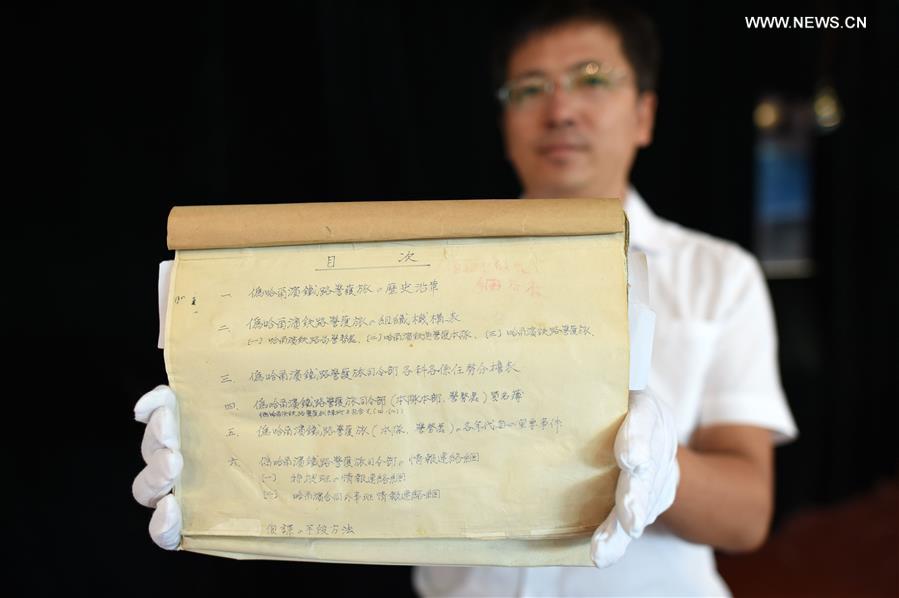
A working staff shows the transportation record of human experiments at the Museum of Evidence of War Crimes by Japanese Army Unit 731 in Harbin, capital of northeast China's Heilongjiang Province, Aug. 16, 2017. New evidence of human experiments and germ war crimes by Japan's notorious Unit 731 were released by the museum Friday, including written confessions of germ war criminals, a transportation record of human experiments, old photos of the unit soldiers and an incubator for producing plague bacillus. Unit 731 was a top-secret biological and chemical warfare research base established in Harbin in 1935 as the nerve center of Japanese biological warfare in China and Southeast Asia during World War II. At least 3,000 people were used for human experimentation by Unit 731 and more than 300,000 people across China were killed by Japan's biological weapons. (Xinhua/Wang Jianwei)
HARBIN, Aug. 18 (Xinhua) -- New evidence of human experiments and germ war crimes by Japan's notorious Unit 731 were released by a museum Friday in Harbin, capital of northeast China's Heilongjiang Province.
The Museum of Evidence of War Crimes by Japanese Army Unit 731 has added written confessions of germ war criminals, a transportation record of human experiments, old photos of the unit soldiers and an incubator for producing plague bacillus.
"The incubator, collected from a resident in Harbin, directly proves 731's atrocities of germ experiments and development," said Jin Chengmin, curator of the museum.
It also verified confessions of a germ war criminal saying that the base had a culture room that could produce 10 kilograms of germs in 12 or 24 hours and four incubators that were used for biological production.
Unit 731 was a top-secret biological and chemical warfare research base established in Harbin in 1935 as the nerve center of Japanese biological warfare in China and Southeast Asia during World War II.
The unit conducted experiments on live human beings to test germ-releasing bombs and chemical bombs, among other atrocities.
Many civilians and prisoners of war from China, the Soviet Union, the Korean Peninsula and Mongolia perished at the hands of Japanese scientists. Some of them were children.
At least 3,000 people were used for human experimentation by Unit 731and more than 300,000 people across China were killed by Japan's biological weapons.
A documentary released on Aug. 13 by Japan's NHK vividly presented the cruel yet irrefutable historical truth through testimonies of Unit 731 participants and authentic records of the Khabarovsk War Crimes Trials in 1949.
After Japan's defeat in 1945, the unit hastily pulled out of China, with 3,000 children and some experimental equipment left behind. Many of the Japanese children were raised by Chinese families.



